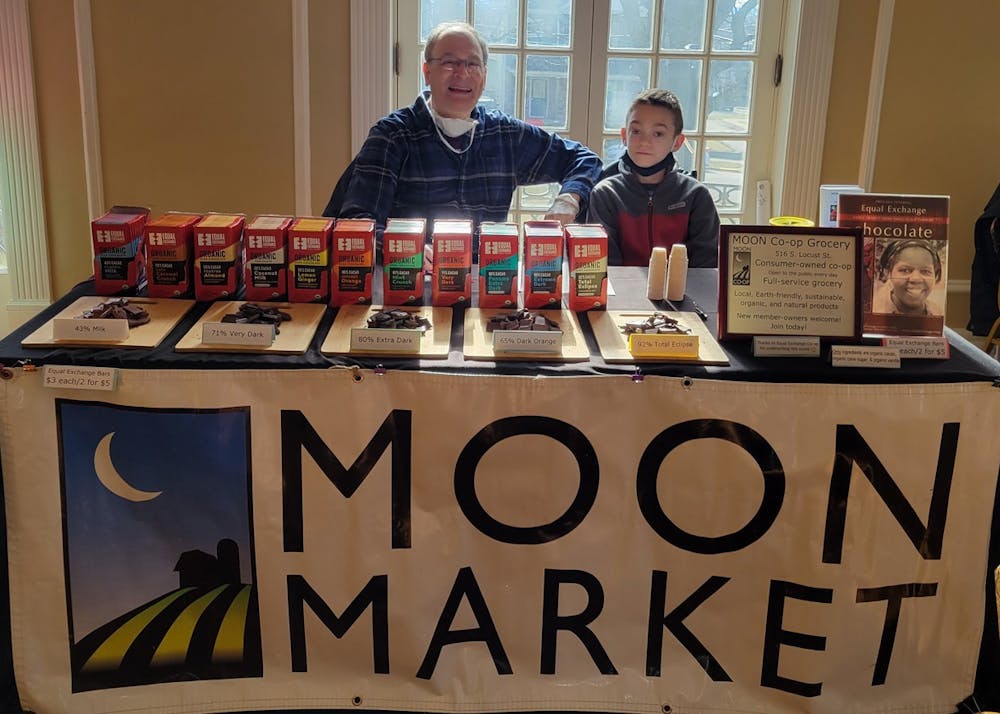Chocolate is synonymous with Valentine’s Day: It’s the day when people send messages of love with cards and flowers — and with chocolates. This year, why not show your love for both your sweetheart and planet Earth by giving Earth-friendly chocolate?
The precursor of Valentine’s Day is thought to be an ancient Roman pagan festival called Lupercalia, which marked the arrival of springtime. In 496 C.E., Pope Gelasius converted Lupercalia into a Christian celebration honoring Saint Valentine.
The holiday became associated with love during the Middle Ages. The oldest surviving valentine is said to be a poem written in 1415 by the Duke of Orleans at age 21 to his wife while he was imprisoned in the Tower of London, following his capture at the Battle of Agincourt.
Chocolate acquired a central role in Valentine’s Day during the mid-19th century. Cadbury started marketing chocolate in heart-shaped boxes with Cupid’s picture.
The word “chocolate” comes from the Nahuatl language, which is the formal term for Aztec. The final syllable means water or drink, but the origin of the first syllable is unclear, possibly from the Nahuatl word for bitter, beaten or simply cacao bean.
Properly speaking, cacao is the bean found inside cacao pods that grow on a cacao tree. The roasted bean is what is known as cocoa.
Human rights abuses are widespread in the conventional chocolate industry. According to the U.S. Department of Labor, more than 2 million children are forced to work on cacao plantations (especially in West Africa) in what the International Labour Organization calls “the worst forms of child labor.” The leading chocolate companies claim that they are powerless to stop the abuses because companies buy their cacao beans from wholesalers.
On the contrary, the chocolate sold at MOON Co-op Market is made from cacao beans grown in farms that are certified as Fair Trade. This certification means that a farm practices sustainable methods, employs safe working conditions and pays living wages.
I recently offered samples of several chocolates to shoppers at MOON Co-op Market. The bars all contained around 70% cacao beans. In contrast, a Hershey’s Bar is around 11% cacao, meaning 89% is sugar, milk, milk stabilizers and various unspecified “artificial” ingredients.
The two favorites were Chocolove and Equal Exchange.
Chocolove is produced in Colorado using Belgian chocolate. Its founder and owner Timothy Moley, described as “tall and slightly eccentric” like Willy Wonka, started the company after a stint working as a USAID volunteer in an Indonesia cacao farm.

Some of the chocolates available at MOON Co. Op.
Enjoy what you're reading?
Signup for our newsletter
Chocolove’s texture is relatively smooth and creamy, so it makes for a good choice for weaning away from conventional candy bars. Inside each wrapper is a poem; for example “Astrophil and Stella” by Sir Philip Sidney is inside the 70% bar.
Equal Exchange is a producer-owned co-op founded in Massachusetts in 1986 by several former managers of food co-op markets (like MOON). Equal Exchange co-op in turn sources its cacao beans from grower-owned co-ops in Latin America. The beans are organically grown and certified Fair Trade. Its Midwest representative Charlie Brandes graduated from Miami 30 years ago.
This Valentine’s Day, your loved ones will thank you for Earth-friendly chocolate.




